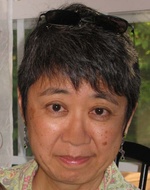Friday, December 12, 1941
“We’ve heard about some awful things happening to Jewish people in Germany because of the Nazis. That sounded so far away until now. I keep telling myself at least we live in Canada and those things can’t possibly happen to us.”
—Susan Aihoshi, Torn Apart: The Internment Diary of Mary Kobayashi
One of the great challenges that the Nikkei community, particularly in Canada, has faced since the Redress victory (1988) is to educate our young people about their community’s history and, in particular, about the “Internment” experiences of their parents and grandparents and concurrently to instill into them some pride about their Japanese heritage.
A Chinese Canadian student of mine recently brought Torn Apart: The Internment Diary of Mary Kobayashi by Sansei Susan Aihoshi, a Toronto-based writer and freelance editor, to my attention. Her maternal grandparents were Yoriki and Midori Iwasaki who published The Continental Times or Tairiku Jiho and her paternal grandfather was H. Naosuke Aihoshi, a tailor. Her mother is Molly (Marie) Aihoshi (Toronto) and father was James.
“Isn’t this about the experience that you talked about your parents going through when they were our age?” Yes. In 1942, Mom’s family was living in New Westminster and Dad’s in Strawberry Hill, British Columbia.
Every year I struggle with how to effectively teach my elementary school students about the internment experience. As a culture, we are far more aware of the contributions of Black Canadians towards the building of Canada than Asians. At a Black History school event I was impressed by how well elementary students knew the names of historical figures. More than once, I wondered if even one person in the auditorium would recognize a picture of author/poet Joy Kogawa, former federal cabinet minister Dr. Tom Shoyama or human rights icon Gordon Hirabayashi?
Torn Apart is told in the voice of Mary Kobayashi who, in May 1941, was 12 years old. Her grandparents and parents had immigrated to Canada. They lived at 2321 Oxford Street in Vancouver along with her grandfather (“Geechan”), three brothers and two sisters.
Mary was a student at Templeton Junior High at the time of the “Mass Evacuation” when Japanese Canadians, including women and children, living on coastal BC were branded “Enemy Aliens”. Mom was working part time at the Tairiku newspaper. Mary was a proud Girl Guide and as Canadian as “maple buds”.
Through her skillful storytelling, Aihoshi pays deference to the now defunct New Canadian JC newspaper, the legendary Asahi baseball team, and the Issei who, during World War One, were not allowed to enlist in the Canadian Army in BC so they went to Alberta to do so, served with distinction in Europe, and have a Vancouver Stanley Park monument dedicated to them.
Aihoshi does a wonderful job weaving many of the notable people (e.g., Vancouver alderman Halford Wilson, Corporal Jack Nakamoto, the Slocan Valley Doukhobors, teacher Hide Hyodo), places (e.g., “The Orchard” in New Denver; Hastings Park; Maikawa department store on Powell Street; Angler POW camp) and major events in our community history (e.g., Japanese Canadian Citizens League petition to the federal government in 1936 for the franchise) into a thoroughly researched and well constructed story that tells the compelling story of a young girl who was caught up in a tragic sequence of events aimed at destroying the Japanese Canadian community in BC.
One of the most memorable passages involved Mary’s racist tormentor, “Billy Foster”. He reminded me of a high school classmate who I had to give a black eye to before he learned his lesson not to ridicule my ethnic heritage. I imagine that we have all suffered similar experiences.
Given the form of this story, like all of the books in the “Dear Canada” series which are written as diaries, many personal descriptions are cursory. However, Aihoshi does a masterful job of piecing them all together into a tapestry of feelings and experience that reflect those of the entire community at that time. It gives us a window into how a young girl felt about losing the family home and possessions, having family members separated and having to live in an internment camp.
For those of us who are the children and grandchildren of “Evacuation” and “Internment” survivors, this book deserves our special attention and, hopefully, will be the catalyst for a younger generation to be empowered by better knowing who they are and where they come from.
As an educator, I feel that as a community we have done a poor job of teaching our young people about the racism and humiliation that their grandparents and great grandparents endured. Nowadays equality and justice for all regardless of race or ethnic origin are taken for granted.
Torn Apart is the story of a reviled ethnic community’s rise above racism. It’s faith in the notion of a ‘fair and just Canada’ transcended the attempts that the B.C. and federal governments made to destroy it before, during and after World War Two.
This work deserves a place of honour in the literature about the Japanese Canadian internment experience alongside Joy Kogawa (Naomi’s Road, 1986) and Shizuye Takashima (A Child in a Prison Camp, 1971).
Torn Apart: The Internment Diary of Mary Kobayashi by Susan Aihoshi (Scholastic Canada, 2012)
© 2012 Norm Ibuki







